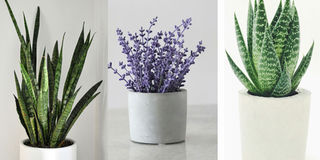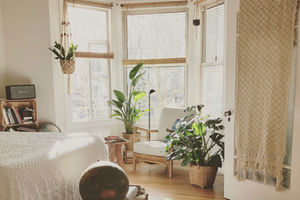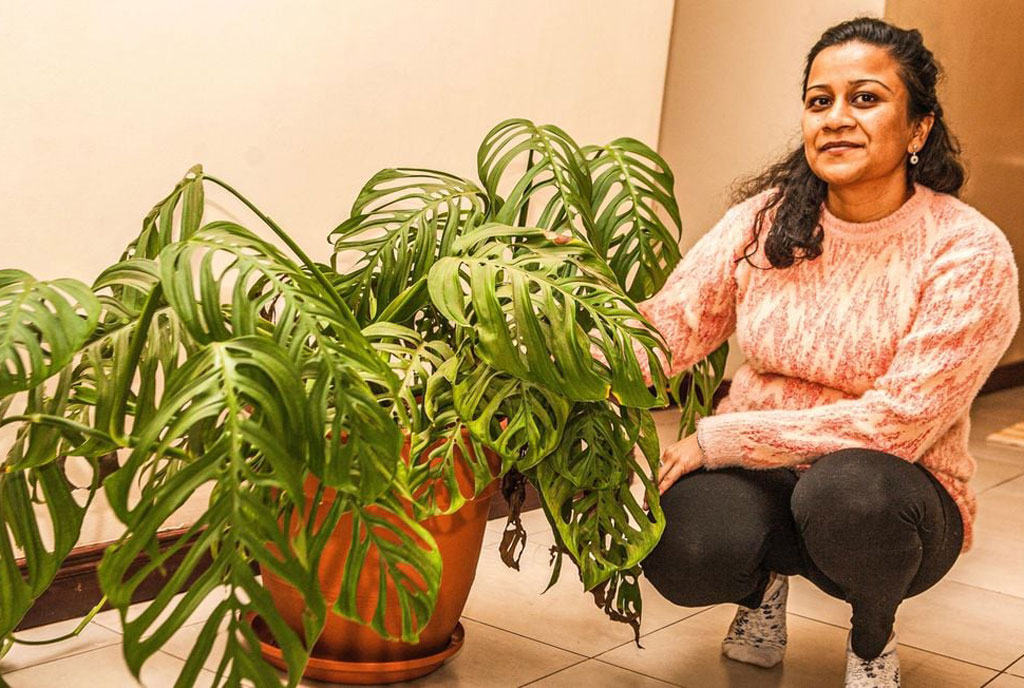
Gardening and nurturing houseplant collections have become popular in recent years. For many individuals, caring for plants has become a hobby that offers a positive focus, providing comfort and beauty through the companionship of living beings within their living spaces.
Experts reveal that plants and exposure to greenery have been scientifically shown to offer numerous mental health benefits, including stress reduction, alleviation of depression, enhanced sociability, improved concentration, better cognitive performance, mood enhancement, and increased self-esteem.
Rewarding experience
In today’s fast-paced and predominantly sedentary lives, spent largely in front of screens, nurturing plants offers a chance to practice true presence in the present moment. Taking care of a plant is a rewarding and worthwhile activity that captures attention and brings a sense of accomplishment right into one’s immediate surroundings.
This practice serves as both a mental health and spiritual practice, fostering a sense of connection, purpose, and belonging in the world. Whether it involves cultivating a garden, caring for a single potted plant, or appreciating trees indoors, the transformative effects help slow our heart rate, deepen our breathing, and relax our muscles with increased oxygenation. Gardening contributes positively to mood, motivation, and energy levels, yet it does not directly influence mental health processes immediately. Rather, it serves as a component of overall mental health maintenance, providing exposure to positive thoughts and emotions that some individuals find beneficial.
Does the number matter?
If you are curious about how many plants are needed to experience benefits, it is not about quantity, but rather about your interaction with them. Consider if the plant is well-placed where you can see it often and if it is thriving.
If you have limited space or are unsure about diving into plant care extensively, starting with many plants might feel overwhelming. Even just one plant can have a significant impact, engaging your senses with its fragrance or color, thereby eliciting positive emotional responses each time you interact with it.
Adapting
As with any new skill or hobby, caring for houseplants or tending a garden involves a learning process. It is important to give yourself patience and grace, as mastery does not happen overnight. Understanding what each plant requires, whether it is sunlight, specific soil conditions, moisture levels, or proper potting techniques, takes time, effort, and investment.
Start by allowing yourself the opportunity to learn the basics. Be patient with the process and be open to a bit of trial and error. Begin with one plant and integrate its care into your daily routine, much like brewing coffee or brushing your teeth. As you embark on this journey, you may find that some plants thrive as you learn to meet their needs effectively. In contrast, others may struggle because you have not yet discovered the optimal care regimen for them, or they might simply require more attention than you can provide.
Over the coming weeks, take the time to educate yourself about the plants you have chosen.
Get to know their characteristics and preferences. Embrace the learning curve and be prepared to adapt as you discover what works best for each plant. This approach allows you to gradually build confidence and competence in nurturing your indoor green companions.
So what are the best plants for bringing more harmony into your home?
Snake plant
For those new to gardening, starting with a low-maintenance plant like the snake plant is highly recommended. Known for its sword-shaped leaves that are typically dark green with striking mustard-yellow or white stripes, the snake plant, also dubbed ‘mother-in-law’s-tongue,’ stands out as an ideal first choice. One of the snake plant’s greatest appeals is its ease of care. It thrives in low-light conditions, making it adaptable to various indoor environments.
Its visually appealing foliage adds aesthetic value to any space, whether it’s a home office, living room, or bedroom. Moreover, snake plants are forgiving of novice gardeners’ mistakes. They are resilient against neglect, tolerating periods of drought if you occasionally forget to water them. This resilience not only ensures their survival but also builds confidence in your ability to care for plants effectively.
Aloe Vera
Aloe Vera combines beauty with functionality, making it a highly recommended addition to any household seeking both aesthetic appeal and practical health benefits from their indoor plants. This succulent is also forgiving and adaptable, making it ideal for those starting in plant care.
Maintaining Aloe Vera is straightforward; watering it once a month is typically sufficient. One of its standout features is the healing gel found inside its leaves, which can be applied directly to the skin for various benefits. This natural gel is renowned for its soothing properties and is commonly used to accelerate the healing of burns, cuts, and scrapes. It is also effective in alleviating sunburn discomfort.
Having an Aloe Vera plant at home not only adds greenery but also helps purify the air. Its ability to detoxify indoor spaces enhances air quality, contributing to a healthier environment. Beyond its ornamental value, Aloe Vera provides practical benefits, serving as a natural remedy for minor injuries and skin irritations.
Lavender
Lavender is not just a visually stunning herb it is also popular for its aromatic properties. Lavender is renowned for its soothing scent, which not only promotes relaxation but also aids in stress reduction and enhances sleep quality. Additionally, this versatile herb offers anti-inflammatory benefits when used topically on the skin. In the garden, lavender serves as a delightful addition, creating a sensory oasis while attracting beneficial wildlife.
Beyond the outdoors, lavender can be harvested and dried, its fragrant flowers adding a touch of natural beauty to indoor spaces when displayed in bowls or sachets. Alternatively, adding dried lavender to a warm bath provides a luxurious and aromatic experience, further enhancing its therapeutic effects.
Whether enjoyed for its visual appeal, aromatic qualities, or medicinal benefits, lavender proves to be a versatile and beneficial herb that enriches both garden landscapes and indoor environments alike. Its ability to soothe the senses and promote overall well-being makes it a valuable addition to any home.
Lemon balm
Lemon balm, a fragrant herb belonging to the mint family, is renowned for its simplicity in cultivation and its multitude of uses. Its gentle lemony aroma becomes especially pronounced when its leaves are gently rubbed between fingers. Other than its pleasant scent, lemon balm is celebrated for its calming properties, making it a popular choice for improving sleep quality, reducing stress and anxiety, stimulating appetite, and aiding digestion.
This versatile herb is commonly enjoyed as a soothing tea and also finds its way into various beauty products, such as lotions and creams. In addition to its therapeutic benefits, lemon balm adds versatility to any setting.
Easy to cultivate, lemon balm thrives in a pot placed by a sunny window, ideally receiving four to six hours of sunlight daily, or it can be grown outdoors in various garden settings. Its adaptability and beneficial properties make lemon balm a valuable herb for both practical and aesthetic purposes, enhancing wellness and enjoyment wherever it is cultivated and used.
Spearmint
Spearmint, a robust herb belonging to the mint family, is known for its resilience and rapid growth. Its lush green leaves release a refreshing aroma that provides an immediate soothing effect, even without the need to brew it into tea.
It thrives in various conditions, adapting well to both containers and garden beds. This hardy herb requires minimal maintenance, making it an ideal choice for gardeners seeking a reliable and rewarding plant.




